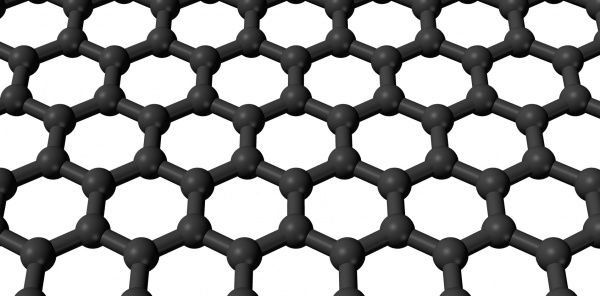|
a team of researchers at penn state have created a device made of bilayer graphene that demonstrated the ability to control the momentum of electronics. this could lead to the creation of electronics that require less energy and dissipate less heat.

(wikimedia commons)
the team’s paper was released in nature nanotechnology. in addition to the lead researchers at penn state, there were engineers from the university of science and technology of china and the national institute for material science in japan.
the abstract is as follows:
“the existence of inequivalent valleys k and k′ in the momentum space of 2d hexagonal lattices provides a new electronic degree of freedom, the manipulation of which can potentially lead to new types of electronics, analogous to the role played by electron spin. in materials with broken inversion symmetry, such as an electrically gated bilayer graphene (blg), the momentum-space berry curvature ω carries opposite sign in the k and k′ valleys.
a sign reversal of ω along an internal boundary of the sheet gives rise to counterpropagating 1d conducting modes encoded with opposite-valley indices. these metallic states are topologically protected against backscattering in the absence of valley-mixing scattering, and thus can carry current ballistically. in blg, the reversal of ω can occur at the domain wall of ab- and ba-stacked domains, or at the line junction of two oppositely gated regions. the latter approach can provide a scalable platform to implement valleytronic operations, such as valves and waveguides, but it is technically challenging to realize.
here, we fabricate a dual-split-gate structure in blg and present evidence of the predicted metallic states in electrical transport. the metallic states possess a mean free path (mfp) of up to a few hundred nanometres in the absence of a magnetic field. the application of a perpendicular magnetic field suppresses the backscattering significantly and enables a junction 400?nm in length to exhibit conductance close to the ballistic limit of 4e2/h at 8?t.
our experiment paves the way to the realization of gate-controlled ballistic valley transport and the development of valleytronic applications in atomically thin materials.”
read the full paper at http://www.nature.com/nnano/journal/vaop/ncurrent/full/nnano.2016.158.html.
|